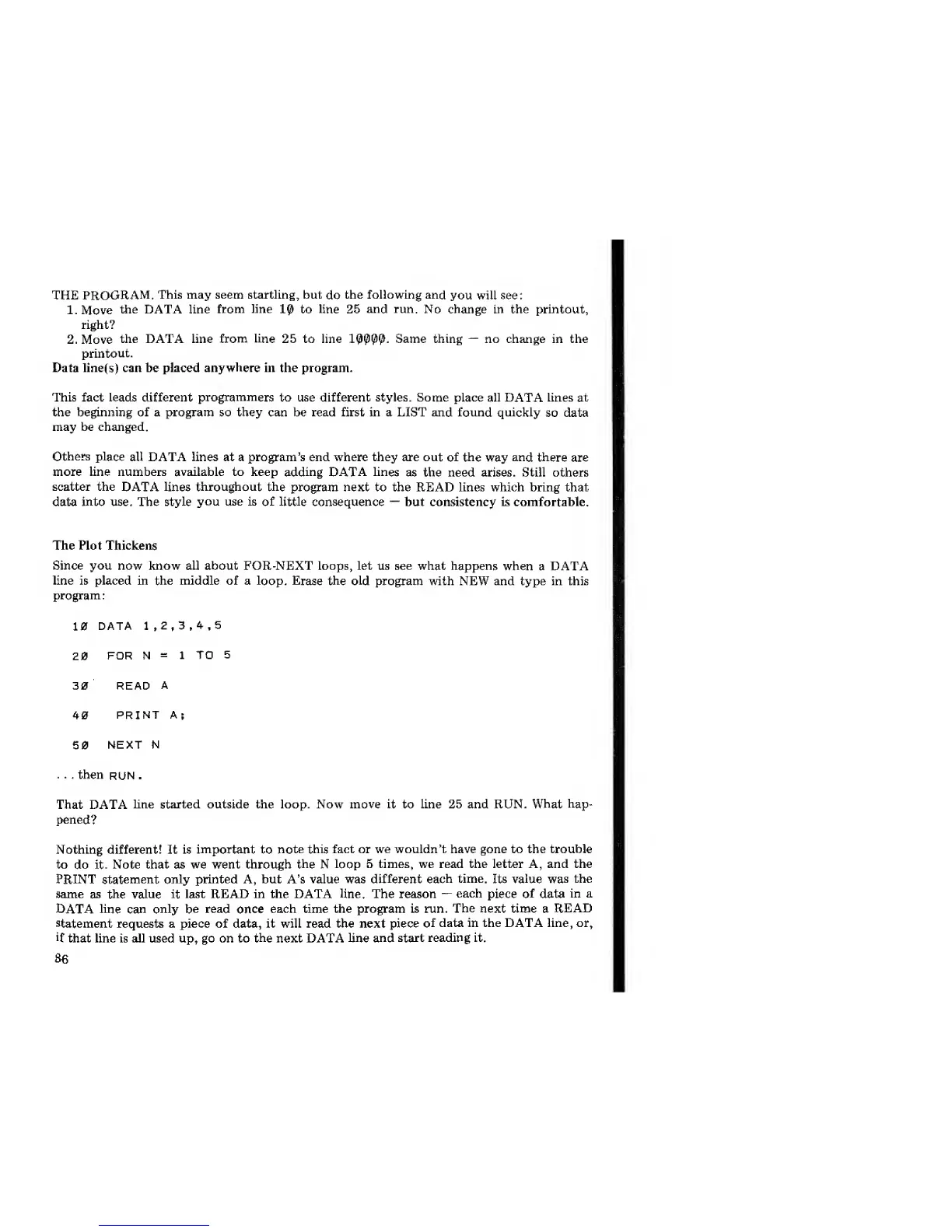THE PROGRAM.
This may seem startling, but
do
the following and
you
will see:
1.
Move
the DATA line
from
line
10
to
line
25
and run.
No
change
in the printout,
right?
2. Move
the DATA line
from line
25 to line
10000.
Same thing
—
no change in the
printout.
Data line(s) can be placed
anywhere
in the program.
This fact leads different
programmers
to use different styles. Some place all
DATA
lines
at
the beginning of a program so they can be read first in a LIST and found quickly
so data
may be changed.
Others
place
all DATA lines at a program's end where they are out
of
the
way
and
there
are
more line numbers available to keep
adding
DATA lines
as the need arises. Still others
scatter the
DATA lines
throughout
the program
next to the READ lines which bring that
data
into
use. The
style
you use is
of little consequence
—
but consistency is comfortable.
The Plot Thickens
Since you now know all about FOR-NEXT loops, let us see what
happens
when a DATA
line is placed in the middle of a loop.
Erase the old program
with NEW and type in this
program
:
10
DATA 1,2,3,4,5
20
FDR N
=
1
TO
5
30 READ
A
40 PRINT
As
50
NEXT N
. .
. then
RUN
.
That
DATA
line started outside the loop. Now move it to line 25 and RUN.
What hap-
pened?
Nothing different! It is
important
to
note
this
fact or we wouldn't have gone to the trouble
to do it. Note that as we went through
the
N
loop
5 times, we read the letter A, and the
PRINT
statement
only printed A, but A's value was
different each
time.
Its
value was
the
same
as
the
value it
last READ in the DATA
line.
The reason
—
each
piece
of
data
in a
DATA line can
only
be
read
once
each time the program is run.
The
next time
a
READ
statement
requests a piece of data, it will read
the
next piece
of
data in the DATA line, or,
if
that line is all used up, go on to
the
next DATA
line and
start reading it,
86

